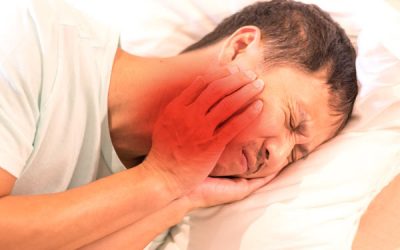Fractures (Condylar and Subcondylar)
Jaw Fractures generally causes significant pain at the level of the injury and substantial amount of inflammation due to the extent of tissue damage. Patients usually reports pain at night with severe morning stiffness and inability to open the month.
- TMJ-dislocation
- TMJ-fracture
TMJ dislocation is generally associated with fractures. Depending on the direction of the dislocation, patient will be unable to either close the month or open. Extreme care should be taken on the reduction of the dislocation to avoid further tissue damage and vascular compromised.
Mechanism of Dysfunction
The predisposing factors for the development of this condition began with a misalignment dysfunction at the TMJ complex, which overtime causes the soft tissue ligamentous, muscle and cartilage to become overloaded and compromised allowing the biomechanical stress to gradually reach the level of the bone and resulting in the development of fractures.
Is important to note that for the bone to become injured, the previous defence mechanisms have to have failed to allow the biomechanical stress to damage the bone, therefore, the treatment care must aim to restore the health of the entire TMJ protective structures.
Assessment Protocol
The upper extremity and spinal biomechanical chain must be evaluated as part of the pelvic/hip analyses as per the neurological and mechanical influences of the spine and shoulder
Clinical assessment to identify the potential areas of the fractures, identify the TMJ dysfunctions that have contributed to this condition. Soft tissue analysis to pinpoint the level of irritation in all tissue layers. Check the level of vascularity.
X-ray analysis
Anterior – Posterior (AP) TMJ view is essential to analyse the level and direction of the different patterns of misalignments and the degree of the degenerative disease and fracture
MRI
TMJ MRI is essential for visualizing the extent of injury on the muscle/tendon and ligamentous, cartilage and bone structure
Locate the exact injury point; Allows the treatment to be more specific during the application of the treatment modalities
Identify the extent of tissue damage and the presence of scar tissue; Provides valuable information regarding prognosis and the application of friction soft tissue modalities to aid on scar tissue removal.
Evaluate the fracture site
Treatment protocol
The treatment care should aim to restore the TMJ alignment, the soft tissue muscles/tendon and ligamentous health as well as stimulating and remodelling the cartilage and bone growth.
Specific adjustments to the TMJ complex followed by a rehabilitation regime to strengthen the entire soft tissue support of the TMJ.
Fracture site must be healing prior to correcting the misalignments
Soft tissue and cartilage/bone healing protocol
Application of Low-level Laser and PEMF directly over the injured tissues to aid on the cellular level of healing as well as improving the microcirculation for the area.
Friction soft tissue therapy helps to reduce dysfunctional scar tissue
Specific stretches and strengthening to improve the resilient of the soft tissue support
Specific selected essential oil application to enhance healing
Dry Needling to promotes blood flow and enhance the soft tissue and cartilage healing.
Depending on the level injury and chronicity, a minimum of 6 weeks up to 12 weeks of treatment care may be necessary to resolve this condition.






